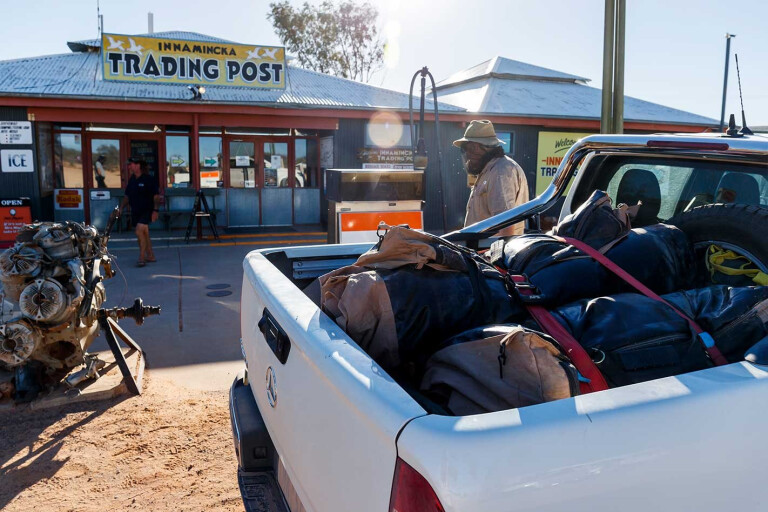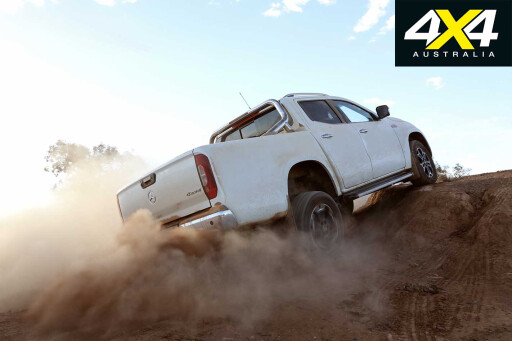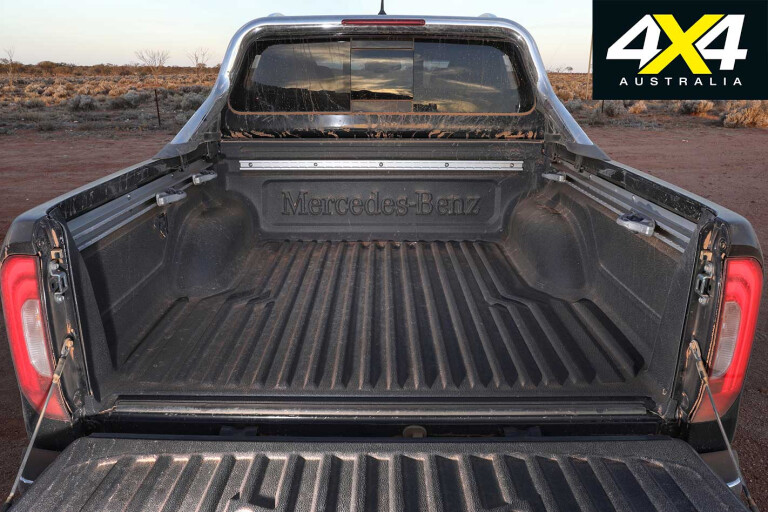
WE’RE STATING the bleeding obvious when we say 4x4 dual-cab utes present a fairly formidable case when it comes to touring.
A ute’s inherent high load capacity combines with a spacious rear tray to allow you to customise a loading system that will perfectly suit your type of touring. In among all the facts and figures such as tray length, tray width, tray height and overall volume (without canopy), a lesser-known component that plays an important role are the anchor points in the tray. They’re simple, but some ute manufacturers seem to have forgotten the simple role they play.
 There’s a big clue in the terms ‘tie-down’ and ‘anchor point’; the most effective way to secure a load is to use a low-set anchor point to tie it down to an anchor point in the back of your ute. In terms of the most effective, ideally you want your anchor points to be substantial – and metal – in construction, and also rated to hold a certain ‘lashing weight’.
There’s a big clue in the terms ‘tie-down’ and ‘anchor point’; the most effective way to secure a load is to use a low-set anchor point to tie it down to an anchor point in the back of your ute. In terms of the most effective, ideally you want your anchor points to be substantial – and metal – in construction, and also rated to hold a certain ‘lashing weight’.
Forget those flimsy nylon/plastic anchor points you see in the back of SUVs, wagons and, scarily, even some 4x4s, as they will hold minimal tension and struggle to restrain a load in the instance of an accident, resulting in potential passenger injury and a loss of load/gear.
Interestingly, 4x4 ute manufacturers can’t seem to reach general consensus on the best location for an anchor point. This is odd considering a ute’s DNA; that is, a commercial vehicle designed for lugging a load safely.
Every trucky, transport driver or courier knows that the best way to secure a load is to anchor the restraining strap/rope down as low as possible, thus ensuring any vertical movement of the load is minimised, no matter how hard the force applied. The other reason behind the seemingly haphazard fitment of anchor points is that perhaps manufacturers know the majority of ute owners will fit their own.
On a recent multiple-vehicle 4x4 ute towing comparison, 4X4 Australia took another peek into various ute trays and found a number of interpretations of what, to manufacturers, constitutes a suitable load anchor point.
Mercedes-Benz’s new X-Class borrows heavily from its Nissan Navara donor vehicle and, as a result, includes Nissan’s oft-lauded Utili-Track system, where the anchor points are up high on the tray’s long sides and can slide horizontally along this plane according to what size the item is that needs securing.

That’s nifty ’n’ all, but the anchor point is a bit high for items such as fridge/freezers, bags, hard cases, jerry cans, etc., meaning there is potential for the load to shift around and potentially work its way loose as the bottom/base of it is not effectively ‘tied down’ to the tray floor. You can, of course, still secure gear relatively effectively with higher-positioned anchor points, but it may mean a more complex arrangement with the straps – and it still might not work with certain items.
Ford’s Ranger has four small anchor points, with two set vertically at the back-end of the tray in the space between the tailgate and the side. The hooks are about a quarter of the way up the tray side, so still too high for an effective tie-down. As the other two hooks are located at the front of the tray, they are miles away from the ones at the rear.
Plus, they’re halfway up the cab wall and facing each other, making them less effective due to the resultant ‘pulling’ of the tightened ratchet strap having the potential to make the secured item top-heavy and at risk of tilting forward.
The Holden Colorado and Isuzu D-Max share the same anchor point design and location as the Ford Ranger and its Mazda BT-50 twin. The anchor point eyelets aren’t particularly sizeable on this quartet, making it very difficult, if not impossible, for those who use wider ratchet straps – they simply may not be able to push the webbing through without folding it in half and thus impeding effective function of the ratchet strap.
The Volkswagen Amarok Ultimate 580 was the only ute that possessed tie-down anchor points in our (and most others’) preferred location: the tray floor. Again, the Amarok only had four, but all four anchor rings were larger and beefier in construction and bolted through, firstly, a metal plate and then the tray liner into the tray itself.

The larger rings mean you can use nearly any popular heavy-duty ratchet strap without having to fold it, thus keeping its working load rating at optimum levels. It also means you can actually tie ‘downwards’, which is itself easier while offering better load security.
Of course, for the serious 4x4 ute-based tourer the best option is to simply forget about the factory-supplied anchor points and fit rated anchor points that have a ‘lashing rating’ as well as a ‘break rating’.
This allows for full personalisation of your ute tray as you can affix them where they are most effective in relation to how you carry gear. As we know, every ute-based tourer’s needs are different; some prefer to keep gear up top, others fit a canopy and drawer system, while others may use two or three hard cases on the tray floor, with a rack system above that can be easily removed when not needed so you can still use the full tray-space if needed.
We reckon these are nearly a must-fit for 4x4 utes – for minimal cost. If you want to make it even cheaper, charge those mates of yours who are always borrowing your ute to move furniture or trail bikes a small fee and you’ll cover the cost of fitting properly rated anchor points in no time.

COMMENTS